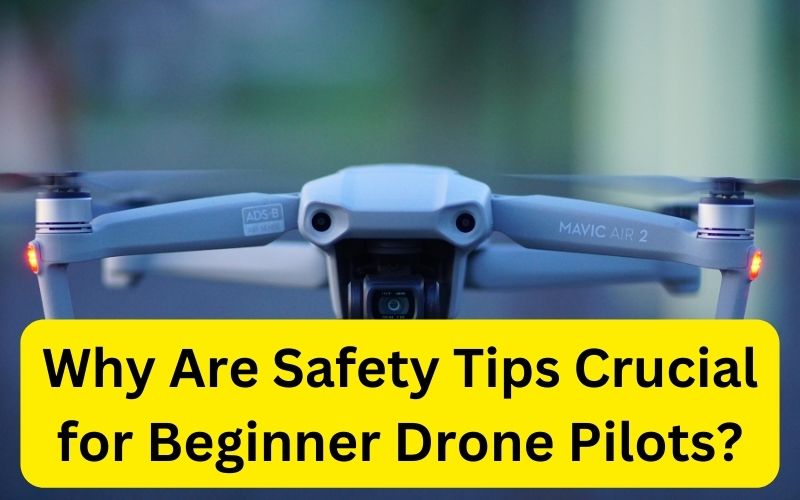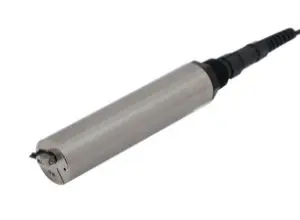Why Are Safety Tips Crucial for Beginner Drone Pilots?

Table of Contents
Looking for the best drones for beginners? When you’re starting out as a drone pilot, understanding why safety tips matter can make all the difference. They’re not just about following rules; they’re about protecting your investment, ensuring smooth flights, and avoiding potential legal issues. Imagine the relief you’ll feel knowing you’ve checked the weather and your drone is ready for takeoff, or the confidence you’ll gain by steering clear of no-fly zones. But what happens when things don’t go as planned? How you handle emergencies can either save your drone or lead to catastrophic outcomes. Curious about mastering these essentials?
Key Takeaways
- Prevents legal issues and fines by ensuring compliance with local and federal drone regulations.
- Enhances flight safety by identifying and avoiding potential hazards such as obstacles and no-fly zones.
- Improves control and stability by preparing for weather conditions that can affect drone performance.
- Minimizes the risk of accidents and damage through thorough pre-flight equipment inspections.
- Facilitates quick response to emergencies, reducing potential harm to people and property.
Understanding Drone Regulations
Before you take your drone to the skies, it’s crucial to familiarize yourself with both local and federal regulations governing drone operations. You must understand licensing requirements, which often include passing an aeronautical knowledge test and registering your drone with the relevant authorities.
Stay updated on regulatory updates as they can change frequently, impacting where and how you can fly. For instance, airspace restrictions might be modified, or new no-fly zones could be introduced. Adhering to these regulations guarantees not only your safety but also the safety of others.
Failing to comply can result in hefty fines or legal consequences. Always keep an eye on official sources for the latest information to ensure you’re flying within the law.
Pre-Flight Checklist
Once you’re well-versed in the regulations, it’s important to conduct a thorough pre-flight checklist to guarantee your drone’s peak performance and safety.
Begin with an equipment inspection, checking the drone’s propellers, battery, and camera. Confirm all components are intact and functioning properly.
Next, verify your remote controller and mobile device are fully charged and connected.
Move on to flight planning. Identify your flight area and check for any potential obstacles or restricted zones. Input your flight path into your drone’s navigation system if available. Validate your GPS signal is strong and stable.
Weather Considerations
Monitoring the weather is essential to ensure safe and efficient drone operation, as adverse conditions can greatly affect flight stability and control. Wind speed and temperature fluctuations are critical factors to take into account. High wind speeds can cause erratic movements and potential crashes. Temperature fluctuations can impact battery performance and sensor accuracy, leading to unpredictable behavior.
Key weather considerations include:
- Wind Speed: Gusts over 20 mph can destabilize your drone.
- Temperature Fluctuations: Extreme cold or heat can influence battery life and electronic components.
- Precipitation: Rain or snow can harm your drone’s electronics.
- Visibility: Fog and low light conditions diminish your ability to see and control the drone.
- Humidity: High humidity can influence sensor readings and reduce performance.
Maintaining Line of Sight
Maintaining line of sight is essential for guaranteeing effective control and safety during drone operation. You need to keep your drone within visual range at all times to uphold visual clarity and assess its position accurately. This practice enhances your spatial awareness, allowing you to respond promptly to obstacles, changes in weather, or potential hazards.
When the drone is visible, you can better judge its altitude, orientation, and speed, which are vital for making precise maneuvers. Losing sight of your drone increases the risk of collisions or losing control entirely.
Always prioritize keeping the drone within your field of vision, as this fundamental practice not only ensures compliance with regulations but also greatly enhances operational safety and overall flight performance.
Avoiding No-Fly Zones
When flying your drone, it’s essential to be mindful of legal restrictions to avoid no-fly zones, guaranteeing you don’t violate privacy rights. Adhering to these regulations not only safeguards individuals’ privacy but also contributes to public safety by avoiding sensitive areas like airports and government buildings.
Always consult updated maps and resources to ensure compliance and safe operation.
Legal Restrictions Awareness
Understanding and adhering to legal restrictions is crucial for beginner drone pilots to make sure they avoid no-fly zones and comply with aviation regulations. You must familiarize yourself with licensing requirements and fines enforcement to operate your drone legally and safely. Ignorance of these regulations can lead to hefty fines or even the confiscation of your drone.
Key points to take into account include:
- Licensing requirements: Make sure you have the necessary permits to fly.
- No-fly zones: Recognize areas where drone operation is prohibited.
- Altitude limits: Adhere to the maximum flight altitude to avoid conflicts with manned aircraft.
- Local ordinances: Be aware of specific local laws governing drone use.
- Fines enforcement: Understand the penalties for violating regulations.
Staying informed helps you fly responsibly and legally.
Protecting Privacy Rights
Respecting legal restrictions not only keeps you compliant, but it also plays a significant role in protecting privacy rights, especially by avoiding no-fly zones.
Flying within these restricted areas can lead to unintended data collection, resulting in privacy breaches and potential legal consequences. Adhering to no-fly zones guarantees you respect individuals’ privacy and comply with data protection laws.
Use up-to-date flight maps and software that alert you to restricted zones to mitigate risks. Always be vigilant about your drone’s camera angle and recording capabilities. By doing so, you avoid inadvertently capturing private activities or sensitive information.
Maintaining awareness of these boundaries not only safeguards others’ privacy but also fortifies your reputation as a responsible drone pilot.
Ensuring Public Safety
To guarantee public safety, always adhere to no-fly zones by consulting updated flight maps and utilizing location-aware software. This vigilance helps prevent accidents and ensures compliance with regulations.
Effective crowd management is critical in populated areas. Implement safety barriers when operating near people to mitigate risks.
- Consult updated flight maps: Always use the latest data to avoid restricted areas.
- Use location-aware software: Software can alert you if you’re entering a no-fly zone.
- Implement safety barriers: Physical barriers can prevent unauthorized access to your drone’s operational area.
- Monitor local regulations: Keep up-to-date with laws that may affect your flight plans.
- Plan flight paths meticulously: Detailed planning minimizes the risk of entering no-fly zones unintentionally.
Battery Management
Proper battery management is crucial for guaranteeing your drone’s best performance and longevity. To maximize battery lifespan, always charge your batteries at designated charging stations specifically designed for drone use. Avoid overcharging by monitoring charge cycles closely; most modern charging stations have built-in safety features to prevent this.
Store batteries in a cool, dry place and avoid exposing them to extreme temperatures, as this can notably degrade their lifespan. Regularly inspect batteries for any signs of damage or swelling, and replace them immediately if you notice any issues. Calibrate your drone’s battery management system periodically to ensure accurate power readings.
Emergency Procedures
Understanding emergency procedures is vital for maintaining control during critical situations.
You must identify potential hazards quickly, execute immediate response steps, and follow post-emergency protocols meticulously.
This approach guarantees safety and minimizes damage to your drone and surroundings.
Identifying Critical Situations
Recognizing critical situations swiftly is essential for every drone pilot to prevent accidents and guarantee safe operations. You must be vigilant about potential hazards like bird encounters and signal interference. Birds can be unpredictable and may attack or collide with your drone, leading to catastrophic failures. Signal interference, caused by external electronic devices or geographic obstacles, can disrupt your control, increasing the risk of crashes.
Key critical situations to monitor include:
- Bird encounters: Sudden bird swoops or attacks.
- Signal interference: Loss of control or signal due to electronic disruptions.
- Battery issues: Rapid battery depletion or overheating.
- Mechanical failures: Unusual noises or erratic movements.
- Weather changes: Sudden wind gusts or rain.
Immediate Response Steps
In an emergency, executing a few critical response steps promptly can prevent a minor issue from escalating into a major accident.
First, immediately activate your drone’s Return-to-Home (RTH) function. This quick action guarantees the drone heads back to a pre-set safe location.
Simultaneously, follow established communication protocols: notify any nearby people and authorities about the situation to avoid panic and potential injury.
If the drone is unresponsive, manually switch it to a lower altitude to minimize impact risk.
Monitor your drone’s telemetry data constantly for any signs of recovery or further issues.
Post-Emergency Protocols
After handling the immediate crisis, guaranteeing a thorough post-emergency protocol is essential for evaluating damage, recovering data, and preventing future incidents.
First, assess your drone for any physical damage and document it meticulously.
Next, initiate data recovery procedures to salvage any flight data that could pinpoint the cause of the emergency.
Conduct a detailed incident report to provide a clear account of what transpired.
Inspect the drone for structural damage.
Retrieve and analyze flight logs for data recovery.
Report the incident to relevant authorities or platforms.
Review and update your emergency procedures based on the incident.
Schedule a maintenance check to ensure all systems are operational.
Conclusion
Safety tips are essential for beginner drone pilots to guarantee responsible flying. Did you know that 64% of drone accidents are due to pilot error?
By understanding regulations, conducting thorough pre-flight checks, and maintaining line of sight, you greatly reduce the risk of incidents. Always consider weather conditions and avoid no-fly zones to protect your drone and the public.
Proper battery management and emergency preparedness further enhance safety, making your flights both enjoyable and secure.




